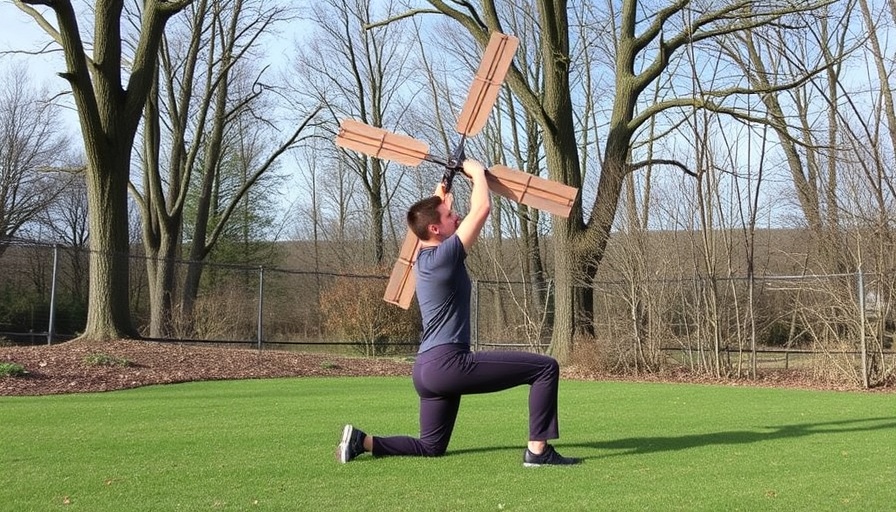
Unlock Your Body: The Half Kneeling Windmill's Power
Mobility is crucial for optimal physical performance, yet many of us struggle with tight hips and shoulders, leading to discomfort and uneven movement. Enter the Half Kneeling Windmill, a transformative exercise that not only challenges your flexibility but also enhances your athleticism. This dynamic movement opens up the hips and shoulders, addressing tightness and promoting better range of motion.
Historical Context: Understanding Mobility Exercises
The concept of mobility training isn't new; athletes across various sports have relied on movements like the Half Kneeling Windmill for generations. CrossFit, yoga, and physical therapy are rife with examples of incorporating functional moves to enhance performance and decrease injury risks. Historically, tight hips were often considered a product of modern sedentary lifestyles, and exercises targeting these areas became increasingly essential.
Real-World Applications: Why Mobility Matters
In today's fast-paced world, many individuals underestimate the importance of mobility in daily activities. Tight hips can contribute to poor posture, joint pain, and even emotional stress due to physical discomfort. Incorporating mobility exercises like the Half Kneeling Windmill can help alleviate these issues, providing not just physical benefits, but also enhancing mental well-being. For anyone juggling tight schedules and sedentary occupations, integrating simple mobility routines can lead to significant improvements in overall quality of life.
Futuristic Movement Trends: The Evolution of Mobility Training
As fitness trends evolve, we see a shift towards embracing holistic approaches that combine strength, agility, and flexibility. Experts predict a rise in mobility routines among athletes and fitness enthusiasts, focusing on holistic practices that integrate mindfulness with movement. The Half Kneeling Windmill is a perfect example, bridging the gap between strength training and mobility enhancement while promoting body awareness.
Counterarguments: Addressing Misconceptions
Despite the clear benefits, some may question the effectiveness of dedicated mobility exercises, perceiving them as secondary to strength training. Numerous studies indicate that injuries often stem from poor mobility; thus, neglecting these exercises can lead to longer recovery times and performance setbacks. It's crucial to understand that mobility is not merely an addition to your routine; it is a foundation for successful athletic performance.
Actionable Insights: Incorporating Mobility into Your Routine
To fully reap the benefits of the Half Kneeling Windmill, consider establishing a daily mobility routine. Start by practicing the basic components of the movement, progressively building up to the full exercise. For those who may struggle, alternative exercises such as deep squats and gentle stretches can also serve as effective precursors. Remember, consistent practice leads to observable improvements.
Fun Insights: Psychological Benefits of Movement
Engaging in mobility exercises like the Half Kneeling Windmill not only improves physical capabilities but also offers psychological boosts. The release of endorphins during movement can enhance mood, reduce stress levels, and foster a sense of accomplishment. For those navigating the complexities of modern life, incorporating these exercises can serve as a refreshing mental reset amidst the hustle.
Incorporating mobility exercises such as the Half Kneeling Windmill is more than just a fitness trend; it’s a pathway to a healthier, more functional life. By committing to daily practice, you’re investing in your body’s longevity and overall well-being.
 Add Row
Add Row  Add
Add 




Write A Comment